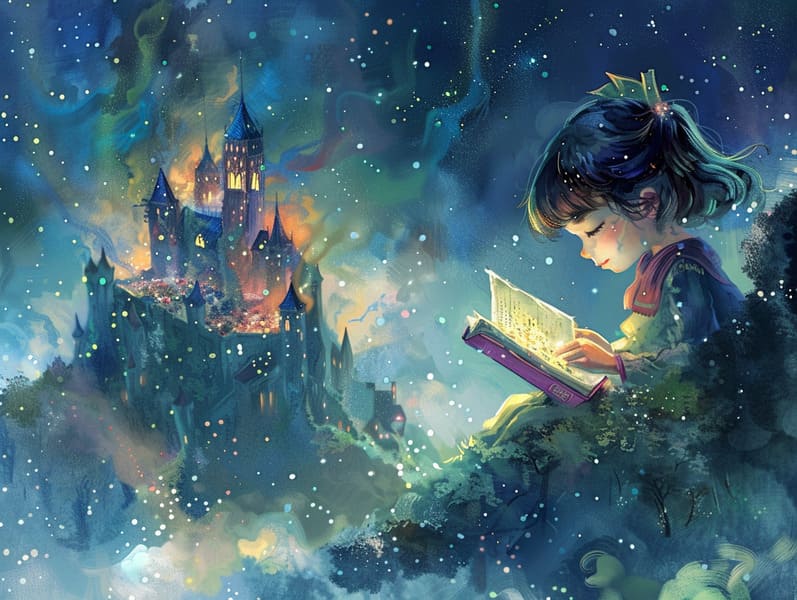The Story Behind Classic Fairy Tales and Their Unceasing Charm.
The Story Behind Classic Fairy Tales and Their Unceasing Charm.
Blog Article

Ancient fairy tales have deep roots. These stories have been told from one generation to the next ages before they were ever published. They arose from a variety of traditions, including European traditions. They were initially shared among elders, often carrying themes and messages aligned with the societal norms and beliefs of the time.
The Grimm brothers, Jacob and Wilhelm Grimm, were among the first to compile and release many of these beloved tales. Their anthology, "Grimm's Fairy Stories," included stories like "The Little Glass Slipper," "The Bread Crumb Trail," and "The True Story of Snow White," which have since become staples in the world of beloved fairy tales. Similarly, Hans Andersen's whimsical stories, such as "The Mermaid," and "The Duckling that Could," have won hearts worldwide, ensuring their place in the pantheon of timeless fairy tales.
Despite their age, fairy tales remain as applicable as ever, especially as children's bedtime stories. These delightful tales are now available in various formats, including colorful picture books, delightful animations, and free fairy tales online.
Their continued relevance can be ascribed to several whimsical characteristics:
Crucial Morals: Traditional fairy tales often convey important moral lessons. Tales like "The Shepherd Boy and the Wolf" teach the value of sincerity, while "The Tortoise and the Hare" point out the traits of perseverance and meekness. These stories offer children clear distinctions between good and bad, molding their moral compass in a subtle yet significant way.
Sympathy and Perception: Timeless fairy tales frequently illustrate personalities facing trials and tribulations, inspiring children to relate with their struggles and rally behind their triumphs. For instance, "Beauty's Beast" points out the virtue of looking deeper to realize the real person of a being, encouraging insight and knowledge.
Cultural Appreciation: Many classic fairy tales are steeped in the cultural contexts from which they were born. Discovering these stories can provide fascinating glimpses into different cultures, fostering a sense of cultural insight and awareness.
Creativity and Imagination: The whimsical elements in ancient fairy tales—enchanted lands—stimulate children’s creative dreams. These tales move readers to otherworldly realms, unleashing inventive ideas and a sense of magic that stays a lifetime.
Classic fairy tales are not only spellbinding but also edifying. They provide magical tools in strengthening various intellectual and emotional famous fairy tales for children capacities in young readers. When traditional fairy tales are spoken, they boost linguistic abilities by presenting new terms and meanings and complex sentence structures. This practice also nurtures hearing perception and attentiveness, as children remain attentive, expectant to see what happens next.
Furthermore, contemplating the themes and characters of timeless fairy tales can cultivate cognitive skills and intellectual skills. Kids learn to notice patterns, make predictions, and comprehend cause and effect. These examinations also advance kids say their thoughts and feelings, fostering their emotional intelligence.
In today’s digital age, the presence of internet fairy tales has made these fairy tales more attainable than ever. Online platforms and digital apps make available wide arrays of timeless fairy tales that can be read or heard anytime, anywhere. Fairy tales told out loud are particularly widespread, presenting an entertaining method for little ones to take part in these spellbinding stories. Sound books and voiced videos lead characters and settings to life, often supported by entrancing harmonies and background music that improve the story journey.
The timeless appeal of classic fairy tales lies in their ability to shift to present days while retaining their essential themes. Contemporary takes of these narratives often showcase more diverse characters and modern settings, making them meaningful to today’s audience. However, the fundamental themes of fortitude, benevolence, and fair play remain unchanged, continuing to resonate with listeners of all ages.
Timeless fairy tales also offer a sense of serenity and understanding. They introduce a methodical narrative with a definite beginning, middle, and end, often coming to a close with the solving of conflicts and the triumph of right over wrong. This dependability can be placating for young readers, allowing a sense of constancy in an always shifting world.
Traditional fairy tales continue to charm and instruct new generations, maintaining their elegance and value in modern society. As children's night stories, they confer upon a perfect blend of charm and enlightenment, nourishing moral values, empathy, and creativity. The availability of internet fairy tales and the favor of fairy tales read aloud confirm that these classic stories remain within reach to new generations.
By guarding and disseminating these narratives, we continue to revere the rich tapestry of creativity and cultural heritage. Whether you are experiencing a artistically illustrated book, exploring a electronic collection, or listening via an read-aloud story, the charm of old fairy tales is always within reach. These narratives reveal of the immortal force of narratives and its ability to bring us together across time and space.
No matter if you are reading a colorful picture book, enjoying a web-based collection, or listening on an narrated book, the fascination of timeless fairy tales is always within reach.
These tales point out of the everlasting ability of stories and its ability to tie us across generations and cultures, creating a bond that delights and instructs alike.